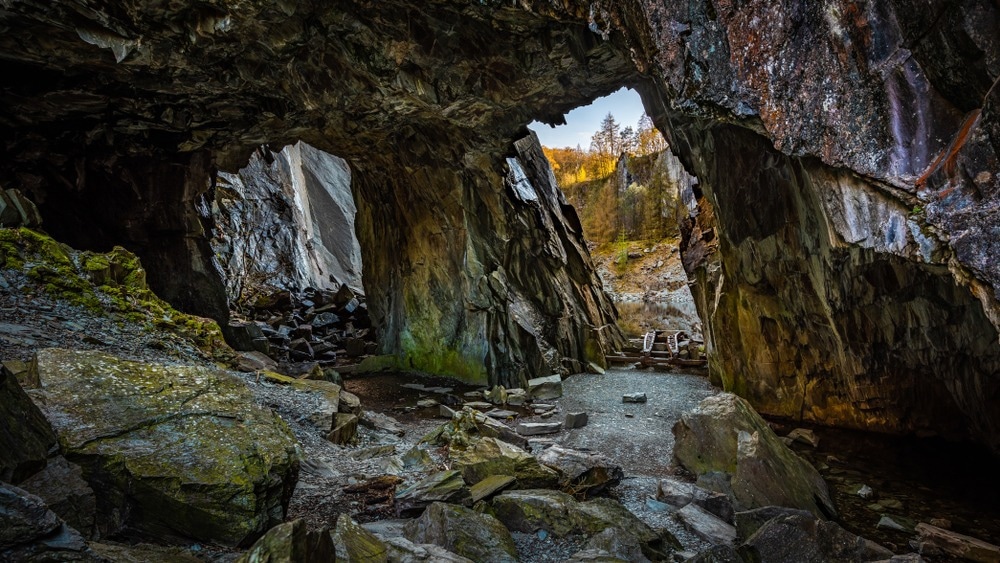Spectroscopy is a relatively new field in some industries, limited in use currently, but has demonstrated outstanding potential for improving how multiple industries operate. This article will explore the use of spectroscopy techniques in mining, a critical economic activity in the modern era.

Image Credit: mountaintreks/Shutterstock.com
What is Spectroscopy?
Spectroscopy has emerged as the fundamental exploratory tool in materials science, astronomy, physics, and chemistry. The techniques in this field of analytical science allow researchers to explore the physical structure, electronic structure, and composition of matter at the atomic, molecular, and macro scale.
Using spectroscopic techniques, scientists measure and interpret electromagnetic spectra resulting from the interaction between matter and electromagnetic radiation as a function of the radiation’s wavelength. Essentially, spectroscopy can be thought of as the study of color.
Spectroscopy has found critical applications in biomedicine, nuclear power, agriculture, pollutant remediation, and mining.
Spectroscopic techniques have allowed scientists to improve the study of resources, which would have been complex and laborious just a few decades ago.
Meeting the Needs of Mining
As the world population grows, there is an accelerating need for critical mining resources to support the rapid urbanization and technological and economic advances indicative of the modern era.
Mined resources are needed for many critical applications in the modern world, such as fuel, energy, electronics, construction, industrial machinery, and domestic goods. This, however, has led to several key challenges, two of the main ones being resource depletion and greenhouse gas emissions.
The mining industry faces the growing challenge of high-grade ore body depletion, environmental issues, and fluctuating commodity markets. Innovation is driving the evolution of the mining industry as it seeks to provide resources for industry in the 21st century.
Spectroscopic techniques can benefit the mining industry, including lowering costs by reducing laboratory tests, increasing data quality, and rapidly identifying ore samples. Spectroscopy can also help to characterize contaminants from mining operations, helping to mitigate environmental problems.
Some common spectroscopy techniques used in the characterization of minerals include atomic absorption spectroscopy, atomic emission spectroscopy, Mössbauer spectroscopy, and Raman spectroscopy. In recent years, innovative spectroscopy techniques have emerged within the sector.
Ore Sample Analysis
Several spectroscopy techniques have been explored in the mining industry to analyze ore samples. One technique that has shown particular promise is laser-induced breakdown spectroscopy (LIBS.) LIBS instruments have the benefits of compactness, simplicity, and robustness.
LIBS has been used to identify samples such as rare earth metals, critical resources in the electronics and renewables industries, such as zinc, nickel, and copper. This technique has significantly improved the time and accuracy of ore sample analysis compared to conventional borehole techniques.
Resource estimates of ore bodies and mine tailings require multiple samples, which are usually time-consuming and costly. LIBS, however, can provide rapid answers on mineral type, composition, and amount in samples. It is much more rapid than conventional techniques.
Characterizing Contaminants
While renewables are increasingly becoming a more prevalent part of the energy mix, they cannot meet every industrial need. Mining critical resources such as hydrocarbons will still need to be an economic activity for the foreseeable future.
However, if not carried out properly, mining can cause huge environmental problems such as changing land use, pollution, emissions, and biodiversity loss. It can impact water bodies, animals, plants, and soil and can take many years to remediate properly.
There is a growing need to properly assess acid drainage, metal mobility, and toxic runoff from legacy mines and new operations. Waste piles from inactive mines can remain for years after operations cease, leaking toxic contaminants into the surrounding environment.
The Airborne Visible/Infrared Imaging Spectrometer (AVIRS) has emerged as a suitable tool for analyzing and mitigating potential contaminants from mining sites. An optical sensor, AVIRS can map harmful substance distribution across entire sites by analyzing the unique spectral absorptions of different minerals.
However, AVIRS is limited to only mapping surface contaminants, meaning it cannot adequately analyze subsurface contaminants. Hand-held spectrometers have also shown great promise in providing reliable, rapid, on-site categorization of mineral contaminants.
Hyperspectral Imaging
Hyperspectral imaging (HSI) gives mine planners powerful exploration tools. The power of these techniques lies in their ability to analyze the wide range of spectral features in minerals across the entire range of visible light and long infrared.
HSI provides instant mineral identification of surface minerals or drill cores in a precise, consistent, and systematic manner. HSI cameras are fast becoming an essential part of the mining geologists' toolkit, enhancing decision-making capabilities, improving mineral estimation, and advancing geoscience data delivery.
In Summary
Spectroscopy is an emerging field within the mining industry, but it is already improving the efficiency of mineral identification in ore bodies and mine tailings, contaminant identification, and other key areas as the industry meets the challenges of the 21st century.
Many different spectroscopy techniques have been explored for use within the mining industry, and this field will continue to find application in the coming decades, helping the mining industry surmount the challenges of resource depletion, sustainability, and economic roadblocks.
References and Further Reading
Tohm, C., Bheemasetti, T. & Diwakar, P (2022) Spectroscopy framework and review of characterization of energy resource sites. Energy Geoscience 3:2 pp. 147-159 [online] sciencedirect.com. Available at: https://doi.org/10.1016/j.engeos.2021.12.003
Photon Etc (website) Spectroscopy Analysis for Mineralogy Mapping [online] photonetc.com. Available at: https://www.photonetc.com/applications-markets/mining-and-geology
Disclaimer: The views expressed here are those of the author expressed in their private capacity and do not necessarily represent the views of AZoM.com Limited T/A AZoNetwork the owner and operator of this website. This disclaimer forms part of the Terms and conditions of use of this website.